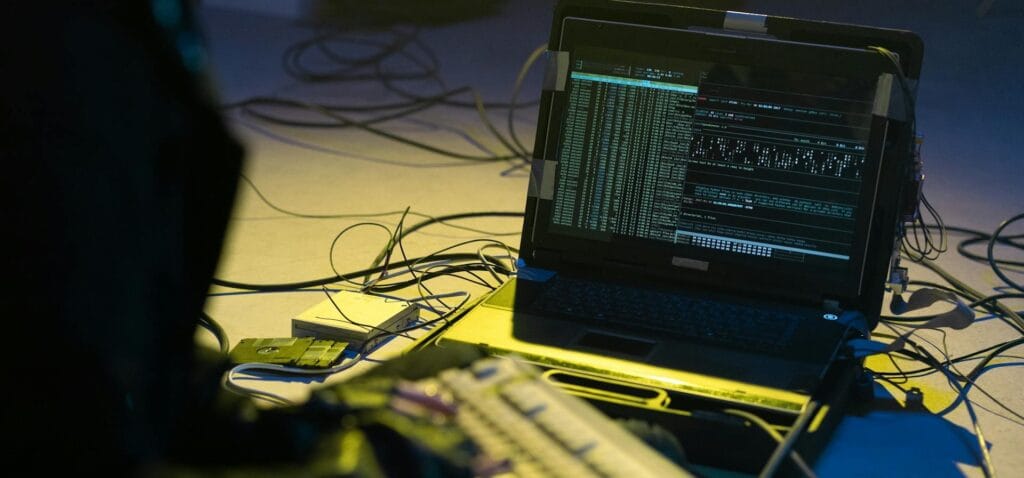It was a sleepy Tuesday afternoon when my phone rang. “Your homepage is redirecting to a suspicious site,” a long-time client messaged. At first, I thought it was a joke. It wasn’t.
Our web portal—handling sensitive user data—was hacked. Malware was injected. SEO spam links were crawling up in Google. That breach didn’t just mess with our website—it almost collapsed investor trust, days before our Series A pitch.
That’s when I realized the importance of a full-stack VAPT Security Audit in India. Not just any scan, but a professional audit aligned with Indian regulations, carried out by experts who know where the cracks hide.
And I’m not alone. According to CERT-In, India faced over 15 lakh cybersecurity incidents in 2023—ransomware, defacements, data leaks, you name it.
The solution? Timely VAPT (Vulnerability Assessment and Penetration Testing) by a reliable partner like Prgenix.
Why VAPT Security Audit in India Matters More Than Ever?

1. You’re Not Too Small to Be Hacked
One of the biggest lies I believed: “We’re not a big company—why would hackers care?”
Reality check: attackers love SMEs. Why? Because they usually have weaker defenses and valuable data.
A report by NASSCOM & DSCI shows that 63% of Indian SMEs experienced at least one cyberattack in 2023.
2. Regulatory Push Is Real (and Aggressive)
Under India’s IT Act and CERT-In’s April 2022 directive, organizations are now expected to:
- Report security incidents within 6 hours
- Maintain logs for 180 days
- Conduct periodic security audits (including VAPT)
Failing to comply = legal liability, project rejection, and financial penalties.
Bonus: If you’re eyeing government contracts or working with NBFCs, VAPT audit reports are mandatory.
3. What VAPT Really Means (Not Just a Buzzword)?
Let’s break it down:
- Vulnerability Assessment (VA) is a systematic scan for known weaknesses in your systems—using tools like Nessus, Acunetix, OpenVAS.
- Penetration Testing (PT) simulates real-world hacking attempts to check if those vulnerabilities can be exploited.
Combined, they expose:
- Weak authentication
- Exposed APIs
- Business logic flaws
- Cloud misconfigurations
- Insecure mobile apps and admin panels
How Prgenix Delivers VAPT Security Audit in India?

Step 1: Pre-Audit Gap Analysis
We begin by mapping out your digital surface:
- Websites & Web Applications
- APIs & Backend Servers
- Cloud infrastructure (AWS, Azure, GCP)
- Mobile apps (Android & iOS)
We identify risk exposure using OWASP Top 10, CIS Benchmarks, and India-specific CERT-In checklists.
Step 2: Real VAPT—Manual + Automated Hybrid
We use leading tools like:
- Automated Scanners: Burp Suite, Nikto, Nmap, Nexpose
- Manual Testing: Logic bypass, privilege escalation, payload injections
Everything is documented with severity levels using CVSS scoring (Critical, High, Medium, Low).
Step 3: Patch Management + Dev Support
We don’t just leave you with a report—we help your devs fix the flaws:
- Code-level fixes
- Secure configuration guides
- API hardening & role-based access checks
After that? We re-test everything—no loopholes left behind.
Step 4: Final Report + Compliance Mapping
Our VAPT Audit Report includes:
- Executive Summary (for management)
- Technical Breakdown (for IT teams)
- CVSS ratings with threat matrix
- Recommendations with timelines
- CERT-In readiness status
Case Study: How a Delhi-based Health-Tech Prevented a ₹1 Cr Loss?
Client: Health SaaS company storing 50,000+ patient records
Issue: Website and APIs under attack via SQL injection
Engagement: Prgenix conducted a VAPT audit within 7 days
Outcome:
- Identified 2 zero-day vulnerabilities in their admin panel
- Hardened API rate limiting and input validation
- Provided compliance-ready report accepted by NHA for ABDM onboarding
- Prevented a data breach days before their investor round
Impact:
- Saved ~₹1 Cr in potential penalties and reputational damage
- Successfully onboarded 3 hospital clients in 45 days
How to Prepare for a VAPT Security Audit?

1. Know What to Test (Assets Inventory)
List every digital asset: apps, servers, mobile apps, subdomains, databases, APIs. Don’t forget test environments—they’re often entry points.
2. Involve Developers Early
A common pitfall: only security teams are looped in. Involve your devs from day one so patching is fast and effective.
3. Schedule VAPT Post Major Updates
After code pushes or infrastructure changes (e.g., moving to cloud), always schedule a fresh VAPT to catch new threats.
4. Document Everything
Keep access logs, system updates, and patch records handy. This simplifies reporting and proves compliance.
FAQs: People Also Ask

1. What is the cost of a VAPT Security Audit in India?
It depends on the scope, but for a standard web + API assessment, costs start from ₹45,000 and go up based on asset complexity.
2. How often should VAPT be done?
Best practice:
- SMEs: Twice a year
- Regulated industries: Quarterly
- After every major update or breach
3. Are VAPT audits mandatory?
Yes—for industries handling user data, financial systems, or regulated sectors (e.g., BFSI, Healthcare, GovTech). It’s often required in tenders, contracts, and certifications.
4. Can VAPT be done remotely?
Yes. Prgenix offers 100% remote VAPT using secure VPN access, staging environments, and NDA-backed confidentiality.
5. How long does a VAPT take?
Typical durations:
- Web app: 5–7 days
- API + backend: 7–10 days
- Full-stack audit: Up to 15 working days
Cybersecurity = Business Survival
VAPT isn’t just about scanning—it’s about staying two steps ahead of threats. It’s about protecting trust, brand, and business continuity.
I learned it the hard way. But you don’t have to.
In a digital-first India, your security posture defines your future.
GET YOUR BUSINESS VAPT READY